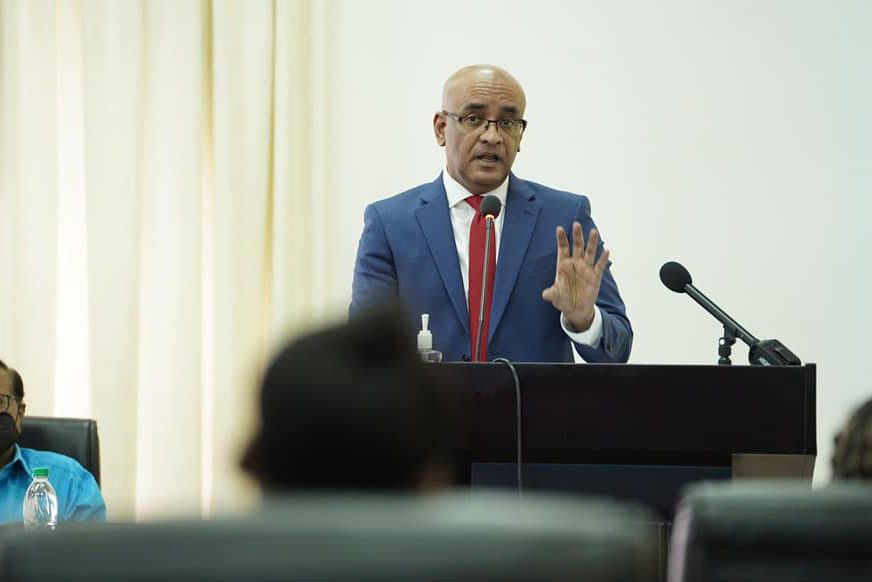As the world charts a path forward to net zero by 2050, some environmentalists argue that countries should leave the natural gas in the ground and move straight to renewable energy. But Guyana’s Vice President Dr. Bharrat Jagdeo argues that natural gas is the most feasible energy source in the world and that the South American country plans to use it as a catalyst to transition the nation’s energy sector into renewables.
“There is no pathway to net zero without using gas as a transitional fuel. Everybody has accepted that, including the US government – which, before COP26, was not accepting that… The whole world has now concluded that,” the Vice President related during a recent press conference.
Why can’t Guyana use solar power or wind energy as baseloads? In addition to the batteries for these sources being costly, Dr. Jagdeo pointed out that wind and solar energy are just not reliable sources of energy.
“What happens when the sun stops shining or the wind stops blowing for a few days?” he asked in response to questions.
“To put in solar energy on its own, that’s fine. We can afford that. That’s what we’re doing with solar since we’re going out to tender for 35 Mega Watts (MW), and we’re putting in just about 30 minutes to an hour of storage for the transition. If we had to put it in storage capacity, we can’t afford it. The battery is so expensive. Very expensive,” he explained.
While the Vice President has his reservations about the reliability of these energy sources, there are such projects being embarked on in Guyana, on a smaller scale than natural gas. Guyana intends to accumulate 39 MW of solar capacity in the next three years. On the wind side, a private developer is working on a 25.2 MW wind farm that is expected to be commissioned 2023.
Hydropower would be the next best renewable source of energy to explore. However, the government has hit a bump in the road with the Amaila Falls Hydropower Project. The company that had secured the project, China Railway First Group (CRFG), informed the government that it encountered issues meeting the contract obligations and sought to remodel project development plans.
“Hydro is energy and capacity, but we are having a hard time going forward with that. It doesn’t seem like we are going to get this until we go back out to tender,” he said.
Guyana’s major hydropower project delayed, but Gas-to-Energy still on track
Turning to the financial and environmental feasibility of natural gas, VP Jagdeo reaffirmed that the government would only have to pay US$0.05 per kilowatt of energy per hour (kWh). This is a significant cost deduction from the US$0.20 that the government currently pays for one kilo Watt hour (kWh). The US$0.05 that Guyana would be paying includes reimbursement costs for the pipeline, the natural gas liquids (NGL) facility and the power plant, the senior government official noted.
Meanwhile, on the environmental side, Dr. Jagdeo highlighted, “When you move to gas too, you also reduce your emission levels significantly because you are not burning bunker ‘c’ or diesel anymore. Gas moves you closer to the transition.”
The realisation of Guyana’s landmark gas-to-energy project is on the horizon with the start of construction at the Wales, West Bank Demerara site expected before the year is out. The government intends to hire a project manager to make sure the project is completed efficiently and on schedule.
No way Guyana can lose from ‘single most transformational project’ in its history – Bharrat
A guaranteed minimum of 50 million cubic feet per day (mmcfd) of natural gas would be transported from offshore to the Wales Development Authority. Guyana’s government will be funding the construction of the power plant, though a source of funding for the NGL facility is yet to be determined. Some GY$20.8 billion was set aside for the project in the country’s 2022 budget.
ExxonMobil intends to start construction on the pipeline aspect this year, with a preliminary cost estimate of US$1.3 billion to be recovered from cost oil.
Gas-to-energy is regarded as a game-changing project for Guyana’s energy sector and will slash energy costs by 50%.




